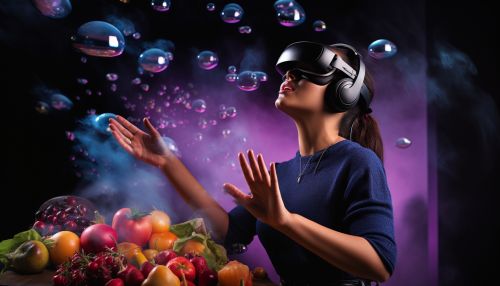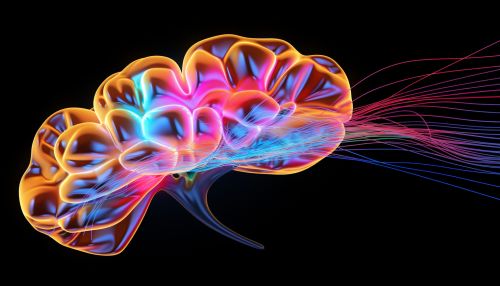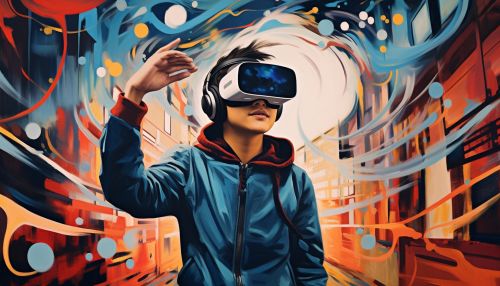The Science of Human Multisensory Perception
Introduction
Human multisensory perception refers to the integrated and interactive process by which humans perceive the world through multiple sensory modalities, including sight, hearing, touch, taste, and smell. This complex process involves the integration of information from different sensory systems to form a unified perceptual experience. The study of multisensory perception is a multidisciplinary field, drawing on insights from psychology, neuroscience, and cognitive science.


The Five Senses
The five primary senses - vision, hearing, touch, taste, and smell - provide the raw data that our brain uses to construct our perception of the world. Each sense is associated with a specific sensory organ and a specific type of sensory receptor.
Vision
Vision is the sense of sight, mediated by the eyes. The eyes contain photoreceptor cells that are sensitive to light and color. The information captured by these cells is processed by the visual cortex in the brain, which interprets the data as visual images.
Hearing
Hearing, or audition, is the sense of sound, mediated by the ears. The ears contain auditory receptors that are sensitive to sound waves. The information captured by these receptors is processed by the auditory cortex in the brain, which interprets the data as sound.
Touch
Touch, or tactile sense, is mediated by the skin and other tissues. The skin contains a variety of sensory receptors that are sensitive to pressure, temperature, and pain. The information captured by these receptors is processed by the somatosensory cortex in the brain, which interprets the data as tactile sensations.
Taste
Taste, or gustation, is the sense of flavor, mediated by the taste buds on the tongue. The taste buds contain gustatory receptors that are sensitive to different types of taste, such as sweet, sour, bitter, salty, and umami. The information captured by these receptors is processed by the gustatory cortex in the brain, which interprets the data as taste.
Smell
Smell, or olfaction, is the sense of scent, mediated by the olfactory receptors in the nose. The olfactory receptors are sensitive to different types of odor molecules. The information captured by these receptors is processed by the olfactory cortex in the brain, which interprets the data as smell.


Multisensory Integration
Multisensory integration is the process by which the brain combines information from different sensory modalities to form a coherent perceptual experience. This process is crucial for many everyday tasks, such as recognizing a person's face and voice simultaneously, or locating the source of a sound by combining visual and auditory cues.
Mechanisms of Multisensory Integration
The mechanisms of multisensory integration are complex and not fully understood. However, it is known that the process involves both bottom-up and top-down processes. Bottom-up processes refer to the direct sensory input, while top-down processes involve higher cognitive functions such as attention and expectation.
Neural Basis of Multisensory Integration
The neural basis of multisensory integration is also a topic of ongoing research. However, it is known that certain areas of the brain, such as the superior colliculus and the posterior parietal cortex, play key roles in this process.


Implications and Applications
The study of human multisensory perception has important implications and applications in various fields, including psychology, neuroscience, cognitive science, and even areas such as virtual reality and human-computer interaction.
Psychology
In psychology, the study of multisensory perception can help us understand how we perceive the world and how our perceptions influence our behavior. For example, research in this area can shed light on phenomena such as sensory dominance, where one sense tends to override others in certain situations.
Neuroscience
In neuroscience, the study of multisensory perception can provide insights into the workings of the brain. For example, it can help us understand how the brain integrates information from different senses, and how this process can be affected by conditions such as autism or schizophrenia.
Cognitive Science
In cognitive science, the study of multisensory perception can inform theories of cognition and consciousness. For example, it can contribute to our understanding of how we construct a coherent perceptual experience from diverse sensory inputs.
Virtual Reality and Human-Computer Interaction
In the fields of virtual reality and human-computer interaction, understanding multisensory perception is crucial for designing immersive and intuitive interfaces. For example, it can inform the design of virtual environments that engage multiple senses, enhancing the user's sense of presence and immersion.


